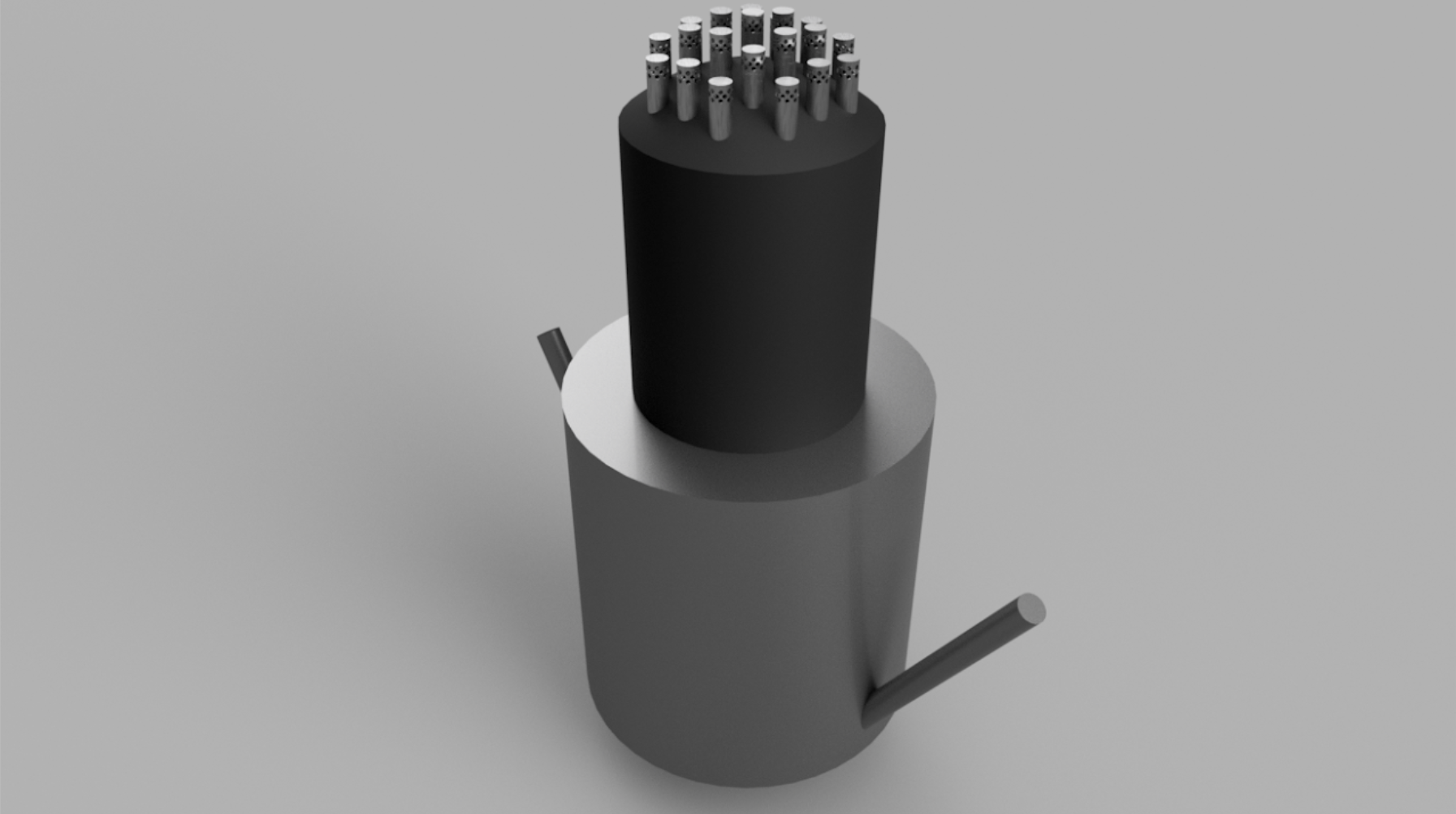During the winter of 2017-2018 I was part of our school's first every biomimicry design challenge team. The goal of our team was to submit a designed created to solve an environmental problem using some type of biomimicry. The prompt for this challenge was fairly open-ended but our team decided to approach an engineering problem where biomimicry could be used as the solution.
Rudimentary CAD model of proposed tree evaporator design.
Below are our team’s respones to the questions from the submission post:
1) What is the problem your team addressed for this challenge and how is it related to climate change?
The problem we chose to address was coastal flooding in Boston. With global warming happening, coastal cities such as Boston are at risk for extreme flooding. This flooding has disastrous effect on homes and businesses, costing millions of dollars in damage each year. There are some defenses against flooding in business and residential areas such as storm drains and sea walls, but they only contain part of the problem.
2) What does your design solution do and how does it solve improve the problem you selected?
Our design solution to create a machine that could take in water from flooded areas, wait till the storm had passed, and then evaporate its collected water into the air. Step one of this process are intake pipes that take water from the street and funnel it into a holding tank. Once there is little humidity in the air, a pump will them bring the water up to many small tubes with heating coils inside which will heat the water into vapor. The energy needs will be accomplished using solar panels at the top of the machine.
3) How was your solution inspired by nature? What organisms did you learn from and how did what you learn inform your design?
Our design was inspired by the process of evapotranspiration. This process occurs in all trees, and is the means by which water goes from the ground into the atmosphere through trees. We thought this was a good means of countering flooding since in many raining environments, such as rainforests, trees mitigate flooding through evapotranspiration. Additionally, when in the process of evapotranspiration trees cool their surroundings, a feature we made sure to incorporate into our design. Our design learns from nature by having an array of roots calibrated to absorb the most amount of water in a given area.
The problem we chose to address was coastal flooding in Boston. With global warming on the rise, coastal cities such as Boston are at risk for extreme flooding. Flooding has disastrous effect on homes and businesses, costing millions of dollars in damage each year. There are some defenses against flooding in business and residential areas such as storm drains and sea walls, but they only contain part of the problem.
In order to combat this issue we designed a machine that could take in water from flooded areas, wait till the storm had passed, and then evaporate its collected water into the air. The process starts with intake pipes. These pikes take water from the street and funnel it into a holding tank. Once there is little humidity in the air, a pump will them bring the water up to many small tubes with heating coils inside which will heat the water into vapor. The energy needs will be accomplished using solar panels at the top of the machine.
This design was inspired by the process of evapotranspiration; a process occurring in all trees. Evapotranspiration is the means by which water goes from the ground into the atmosphere through trees. We thought this was a good means of countering flooding since in many raining environments, such as rainforests, trees mitigate flooding through evapotranspiration. Additionally, when in the process of evapotranspiration trees cool their surroundings, a feature we made sure to incorporate into our design. Overall, our design learns from nature by having an array of roots calibrated to absorb the most amount of water in a given area.
